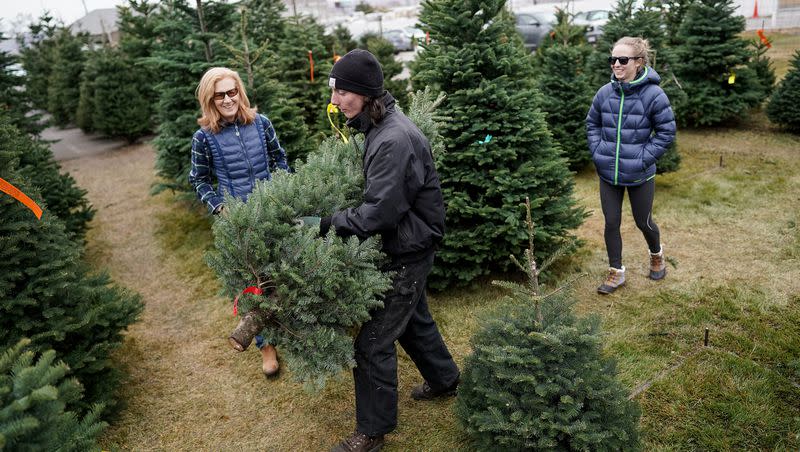When did Christmas trees become a holiday staple?

Christmas just wouldn’t be the same without the famous evergreen — whether fake or real — lighting up homes across the world. According to an American Christmas Tree Association poll, “Despite inflation concerns, 94% of consumers plan to display at least one Christmas tree this season.”
Christmas trees weren’t always the hallmark they are now — and were even greatly disliked by some. Trees are a central part of the holiday season in many countries worldwide, often decorated with lights, ornaments and tinsel.
Here’s an exploration into the origins of the widespread holiday tradition of Christmas trees and how they integrated into the holiday season:
Where did Christmas trees originate?
“Germany is credited with starting the Christmas tree tradition — as we now know it — by the 16th century when sources record devout Christians bringing decorated trees into their homes,” according to History. “Some built Christmas pyramids of wood and decorated them with evergreens and candles if wood was scarce.”
It is believed that the earliest market for Christmas trees was situated just beyond the southwestern border of Germany in Strasbourg in Alsace, Time shared.
Judith Flanders’ ”Christmas: A Biography” said, “The ‘first decorated indoor tree’ was recorded in 1605, in Strasbourg, decorated with roses, apples, wafers and other sweets,” Time added.
Symbolizing the Garden of Eden, these evergreen trees, adorned with apples, were displayed in homes, representing the religious celebration of Adam and Eve’s feast day.
Lights were originally candles placed on the trees. This custom of placing candles on tree branches is most often credited to Martin Luther, the prominent figure in the Protestant Reformation during the 1500s.
“Legend suggests he was inspired by the stars in the night sky and wished to recreate the scene in his own home using candlelight,” per Country Living.
Related
How did Christmas trees become popular in the U.S.?
Christmas trees became popular in the United States during the 19th century. Their introduction is largely attributed to German settlers who brought the tradition with them in the early 1800s.
“Many Puritans opposed the holiday because of its pagan roots, and officials of the Massachusetts Bay Colony actually outlawed celebrating Christmas. Their dislike of the holiday was such that they even closed their churches on Dec. 25,” according to Britannica.
The widespread adoption of Christmas trees across America is often linked to a key event in the mid-19th century. Britannica added that the turning point was the publication of a drawing in 1850 that depicted Queen Victoria and her German husband, Prince Albert, celebrating around a Christmas tree.
This image was highly influential and appeared in the popular Godey’s Lady’s Book, an American magazine. As Queen Victoria was a trendsetter, this endorsement made Christmas trees fashionable in American high society.
By the late 19th century, Christmas trees had become more common in American households. “Christmas ornaments were arriving from Germany and Christmas tree popularity was on the rise around the U.S. It was noted that Europeans used small trees about four feet in height, while Americans liked their Christmas trees to extend from floor to ceiling,” per History.
With the advancement of technology and industry in the 20th century, homemade decorations were gradually replaced by dazzling electric lights and shiny decorative ornaments. The ornaments, “inspired by imported German glass ornaments, marked the beginning of the U.S. ornament industry in the early-to-mid 1900s,” according to Country Living.

